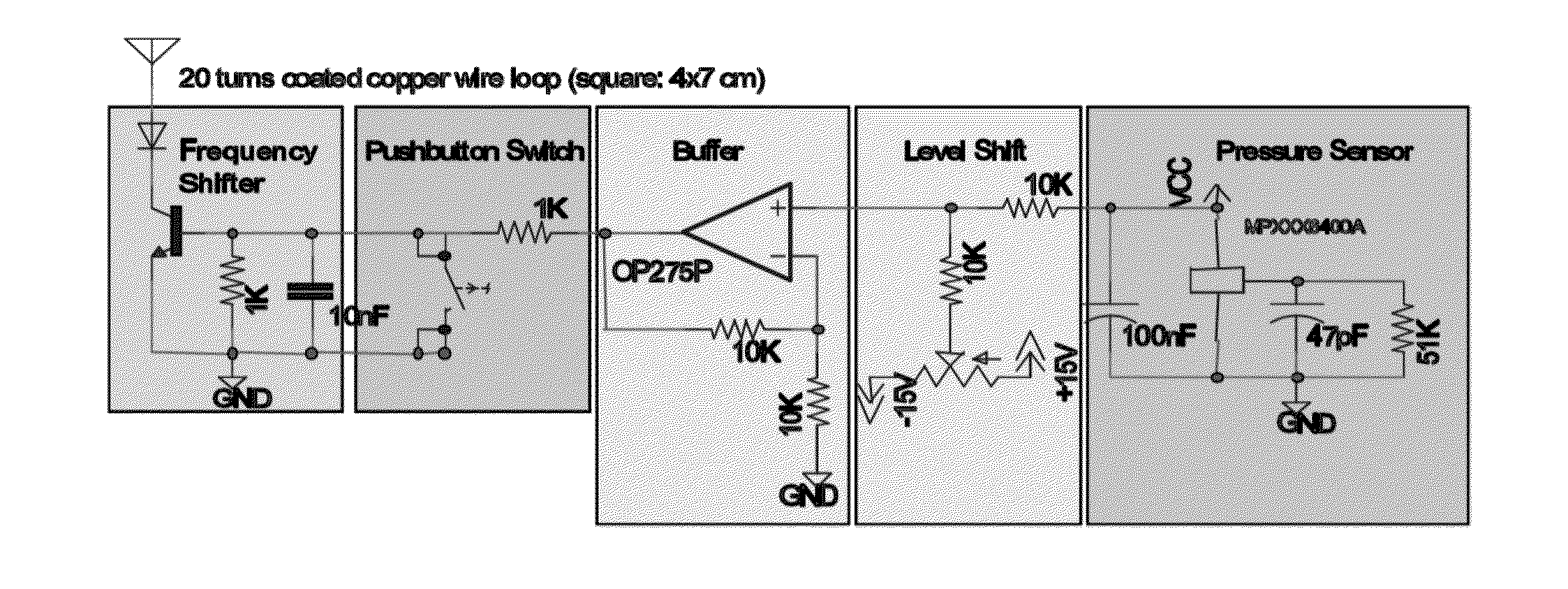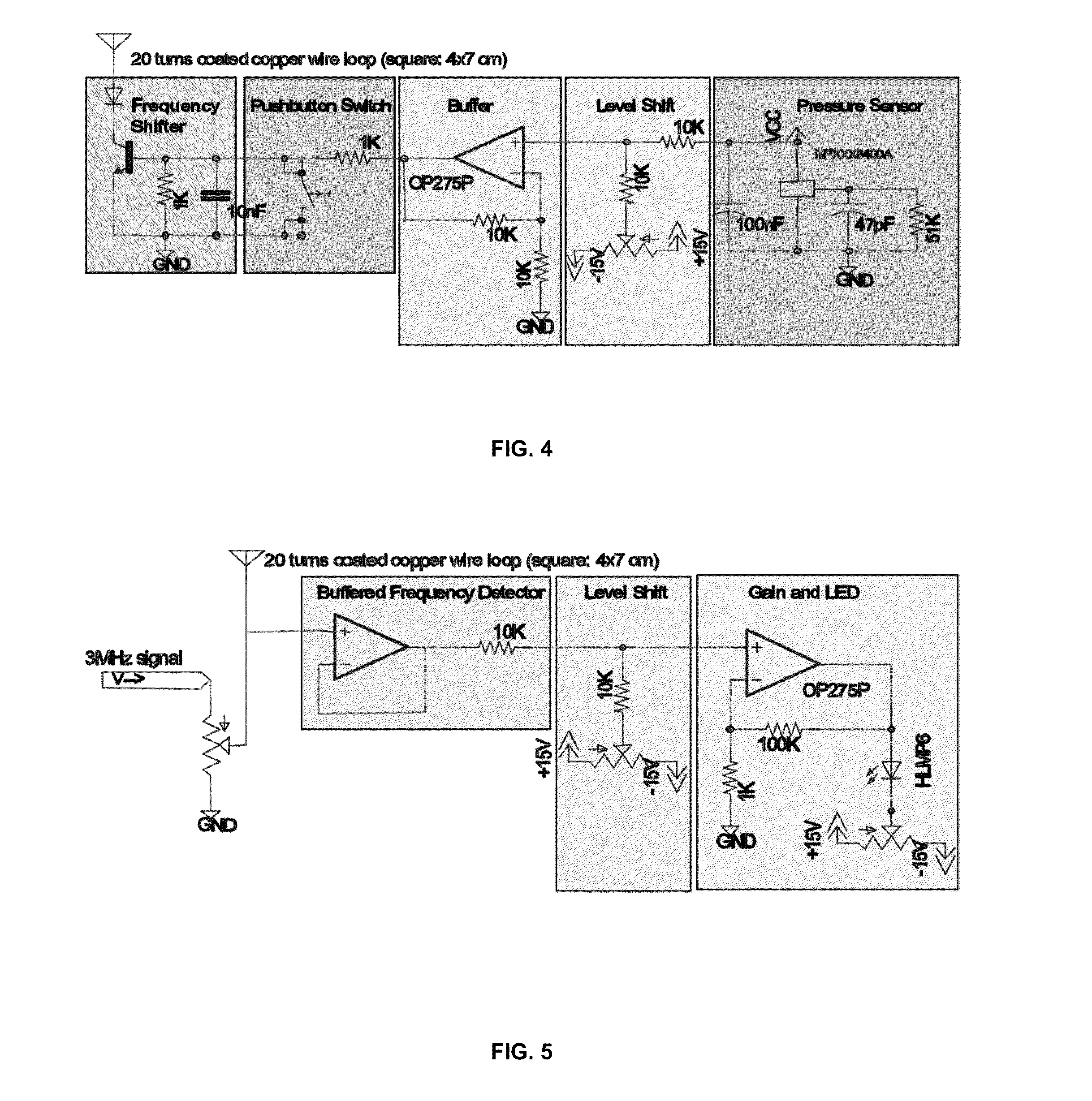Method for RFID Communication Using Inductive Orthogonal Coupling For Wireless Medical Implanted Sensors and Other Short-Range Communication Applications
a wireless medical and inductive orthogonal coupling technology, applied in the field of biological parameters detection systems, can solve the problems of difficult implementation of implantable medical devices, difficult to achieve high levels of accuracy, and high interference levels, so as to improve the diagnosis and treatment of people, improve the signal-to-noise ratio, and improve the effect of short-term and long-term outcomes
- Summary
- Abstract
- Description
- Claims
- Application Information
AI Technical Summary
Benefits of technology
Problems solved by technology
Method used
Image
Examples
example 1
[0069]FIGS. 4-5 are circuit diagrams of reader and tag corresponding to one particular simple embodiment of the invention that uses a simple bipolar transistor as the non-linear impedance and an envelope detector as the detection device. FIGS. 6-7 are general schematics of the system.
[0070]One contemplated design exploits the frequency-dependence of the open-loop gain and common-mode rejection ratio (CMRR) of an inexpensive, low-end operational amplifier. It can be shown (Philips, 1988) that the DC gain of a voltage follower buffer is given by:
A(2CMRR+1)2CMRR(1+A)-A
where A is the open loop gain of the op amp. The frequency-dependence of this A and CMRR results in an offset voltage that varies by nearly 2 volts between 1 MHz and 10 MHz. This varying offset voltage can be used to detect the presence and strength of the harmonics which are introduced by the sensor.
example 2
[0071]A reader circuit has a carrier frequency of 3 MHz, and induces a 3 MHz sinusoid on the sender circuit. Pressure Sensor voltage output introduces harmonics of the carrier frequency on the sender circuit. The goal is to determine the pressure based on the induced waveform in the reader circuits. To determine this we looked at the induced frequency spectrum to determine a possible relation between different power levels in each harmonic and pressure. The plots in FIG. 8 indicate power across the frequency spectrum for different pressure levels. The inventors then examined power versus pressure for each of the first 6 harmonics (not including carrier), as shown in FIG. 9.
[0072]To determine a model for this, the inventors tried a few simple functions to fit:
V=a0+a1*Pi+a2*Pi2+a3*Pi
V=a0+a1*Pi+a2*Pi*Pj+a3*Pj
V=a0+a1*Pi+a2*Pj+a3*Pk
V is the sensed signal (pressure sensor voltage), a0, a1, a2 and a3 are constants and P, is the power in the ith harmonic. To fit these models, they used m...
PUM
 Login to View More
Login to View More Abstract
Description
Claims
Application Information
 Login to View More
Login to View More - R&D
- Intellectual Property
- Life Sciences
- Materials
- Tech Scout
- Unparalleled Data Quality
- Higher Quality Content
- 60% Fewer Hallucinations
Browse by: Latest US Patents, China's latest patents, Technical Efficacy Thesaurus, Application Domain, Technology Topic, Popular Technical Reports.
© 2025 PatSnap. All rights reserved.Legal|Privacy policy|Modern Slavery Act Transparency Statement|Sitemap|About US| Contact US: help@patsnap.com



